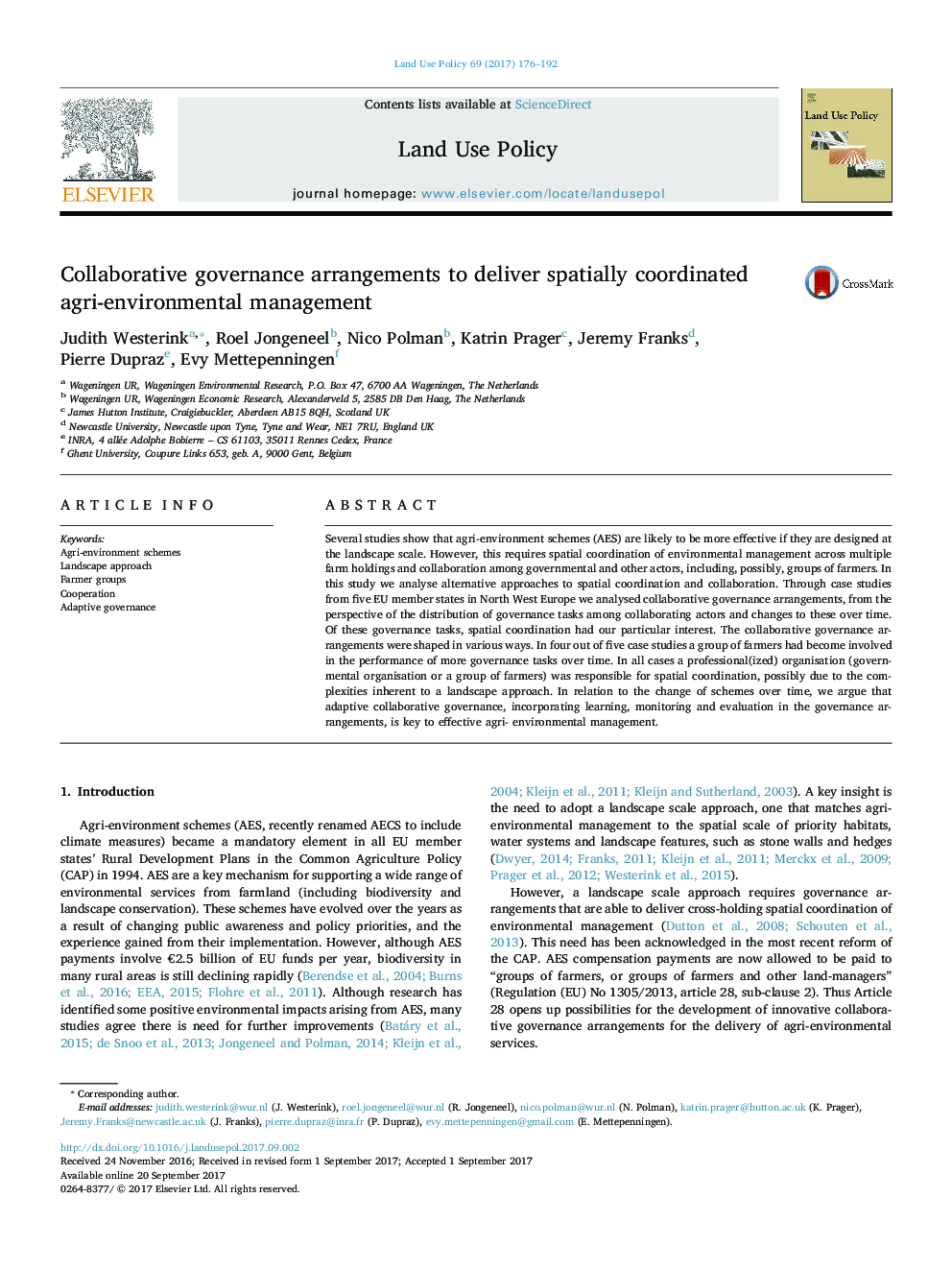| Article ID | Journal | Published Year | Pages | File Type |
|---|---|---|---|---|
| 6460345 | Land Use Policy | 2017 | 17 Pages |
â¢Effective AES often require spatial coordination and collaboration.â¢In governance of AES, tasks can be distributed between actors, including farmer groups.â¢We analysed case studies in five EU member states: FR, BE, GE, EN and NL.â¢Spatial coordination is often done by professional organisations.â¢Learning from experiences is needed for adaptive governance of AES.
Several studies show that agri-environment schemes (AES) are likely to be more effective if they are designed at the landscape scale. However, this requires spatial coordination of environmental management across multiple farm holdings and collaboration among governmental and other actors, including, possibly, groups of farmers. In this study we analyse alternative approaches to spatial coordination and collaboration. Through case studies from five EU member states in North West Europe we analysed collaborative governance arrangements, from the perspective of the distribution of governance tasks among collaborating actors and changes to these over time. Of these governance tasks, spatial coordination had our particular interest. The collaborative governance arrangements were shaped in various ways. In four out of five case studies a group of farmers had become involved in the performance of more governance tasks over time. In all cases a professional(ized) organisation (governmental organisation or a group of farmers) was responsible for spatial coordination, possibly due to the complexities inherent to a landscape approach. In relation to the change of schemes over time, we argue that adaptive collaborative governance, incorporating learning, monitoring and evaluation in the governance arrangements, is key to effective agri- environmental management.
